Day 40: Jiayuguan -> Dunhuang (敦煌)
Jiayuguan (嘉峪关) is considered the westernmost terminus of Imperial China. Here lay a fortress that was the stronghold against the nomadic tribes in the west in the 1300-1600s. Situated at the narrowest point of the Hexi corridor, which separates the Qilian mountains to the South and the Gobi Desert to the North, this was the last stop on the Silk Road before leaving China, and the first stop for the Mongols, the Xiongnu, and the Turpans, when invading China. During the Ming Dynasty, to be exiled from China was to be cast out of the gates of Jiayuguan. And so, I spent the morning exploring the fortress itself, and the remnants of the Great Wall.
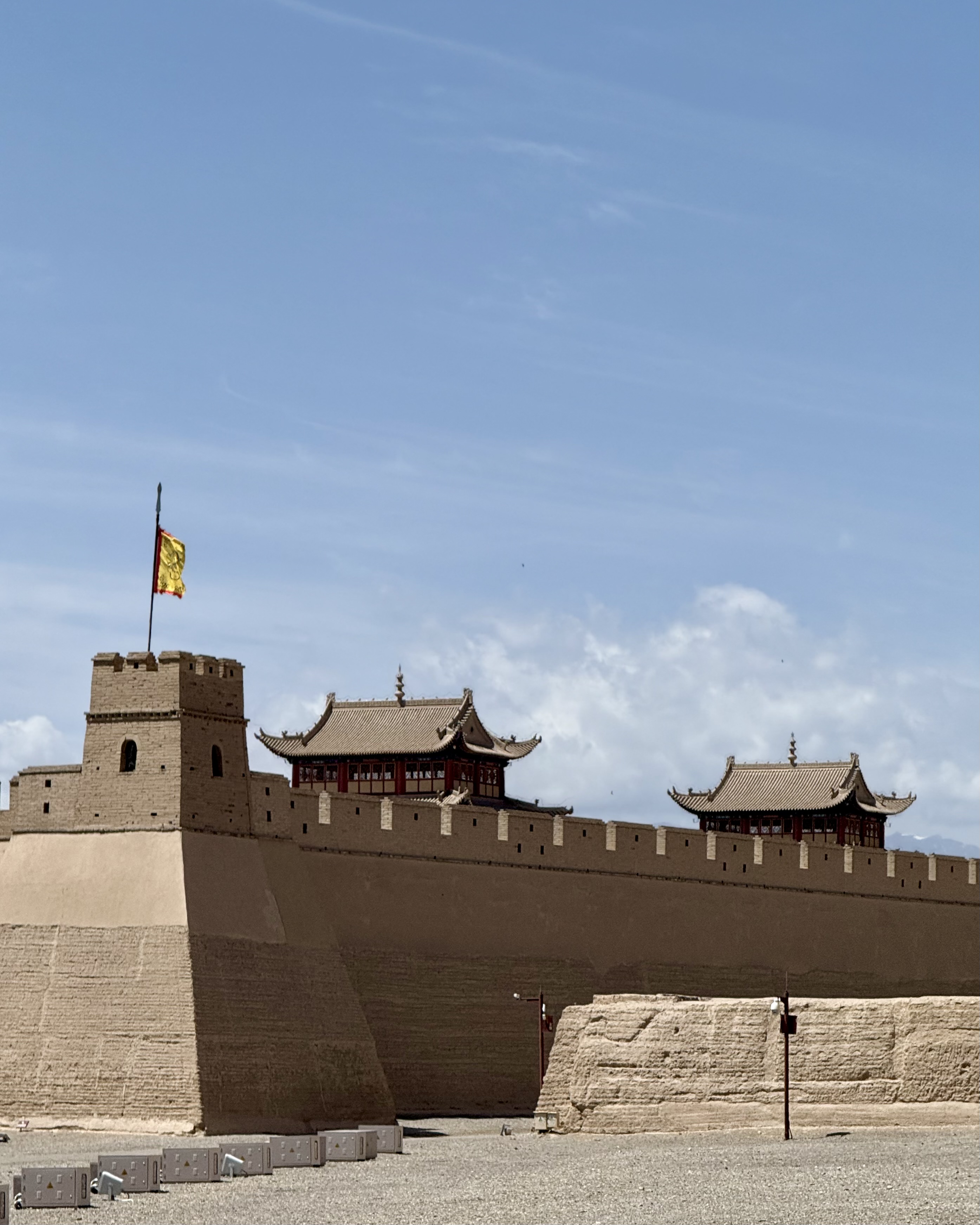 Fort at Jiayuguan Pass
Fort at Jiayuguan Pass
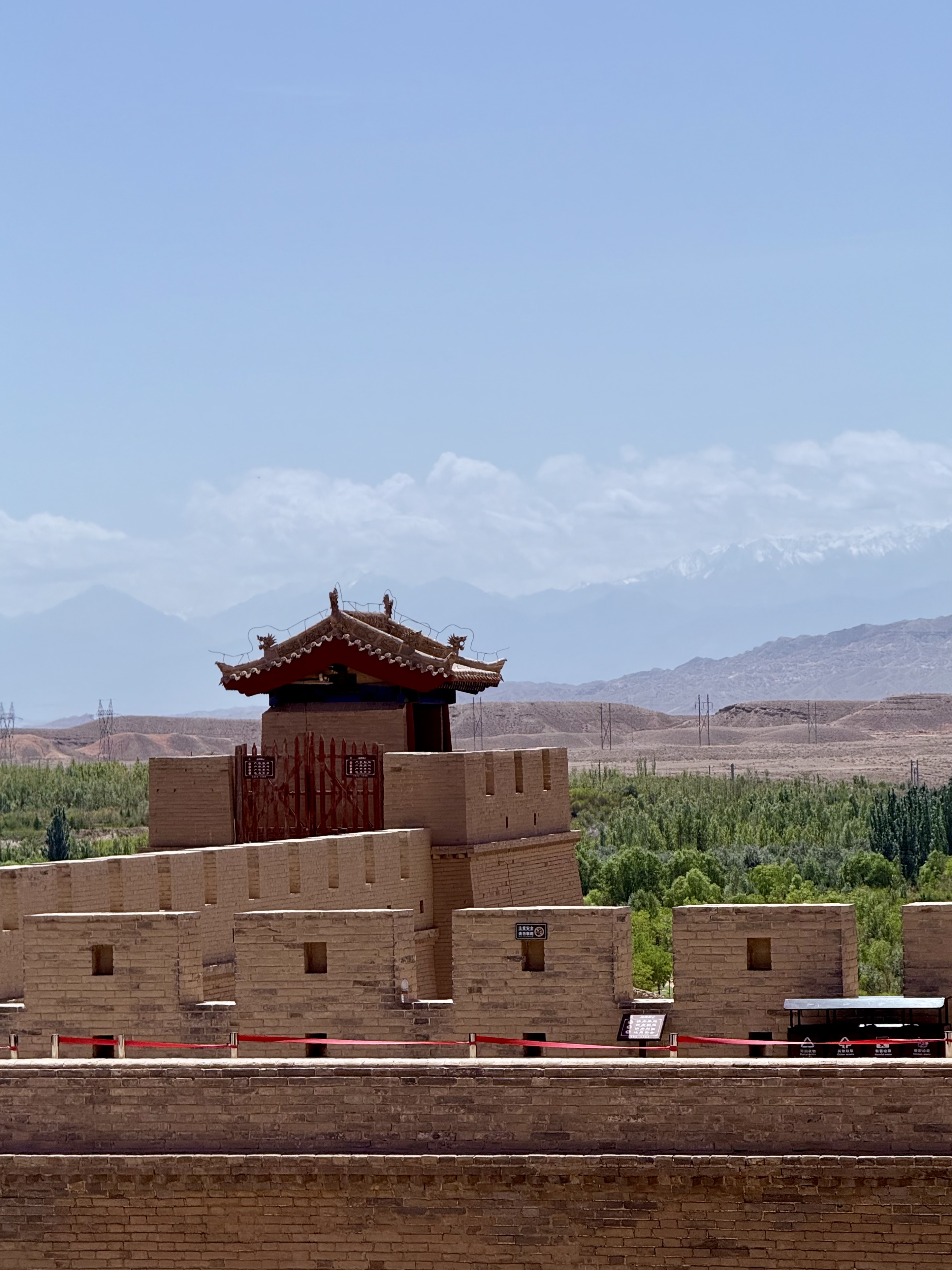 Looking South at the Qilian mountains
Looking South at the Qilian mountains
I was quite impressed by the fortifications; it was in such good condition that I thought this had been a reconstruction, but apparently this is mostly preserved in its original form.
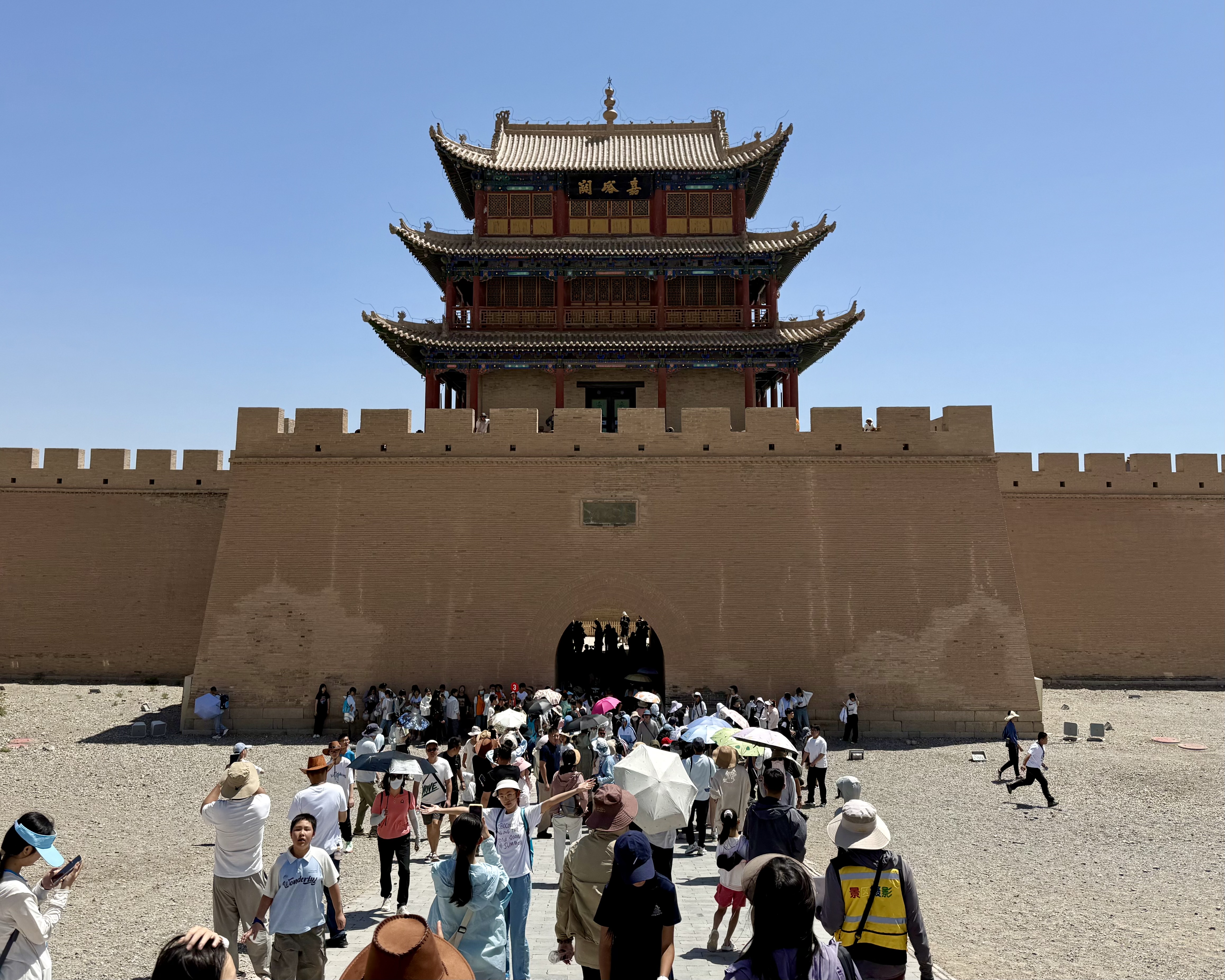 The westward side of Jiayuguan Pass (which would face visitors from the west)
The westward side of Jiayuguan Pass (which would face visitors from the west)
Inside were lots of tourists, shops, and I found it most interesting to stand on the fortifications, and look out towards the Hexi Corridor and its boundary mountains.
Then I set off for the “Overhanging Great Wall” attraction, where my plan was to find sections of the Great Wall nearby the road, so I could take photos free from the carefully curated tourist attractions themselves, which rarely allow private vehicles to enter. This was ~10KMs out of town, where the flatlands meet the mountains, and I was very pleased to find exactly what I was looking for.
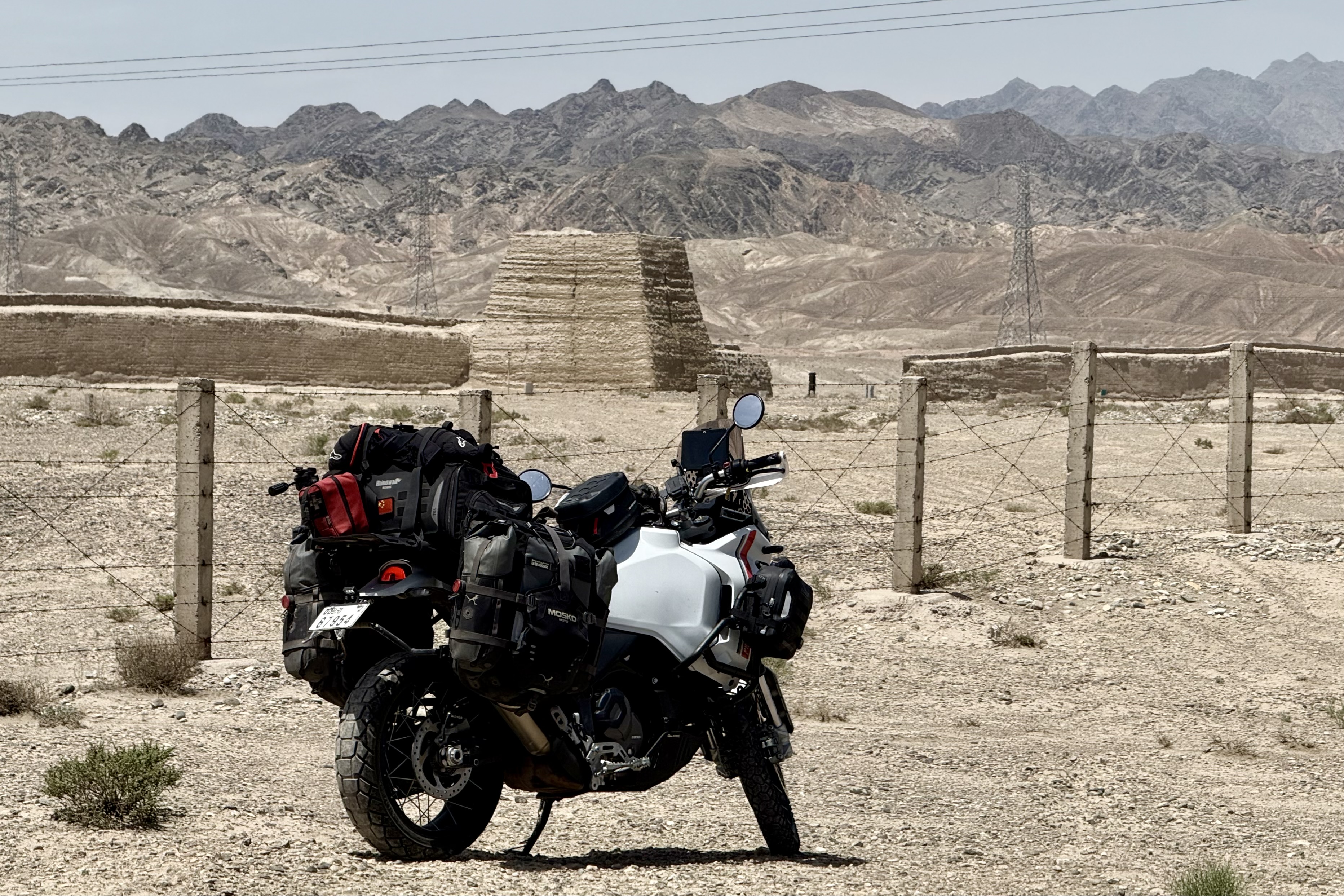 The first remnants of the Great Wall that I encountered
The first remnants of the Great Wall that I encountered
Along the road, were sections of (fenced off) Great Wall, and as I approached the attraction itself, I could see two areas where the wall could be seen dramatically ascending up the mountains.
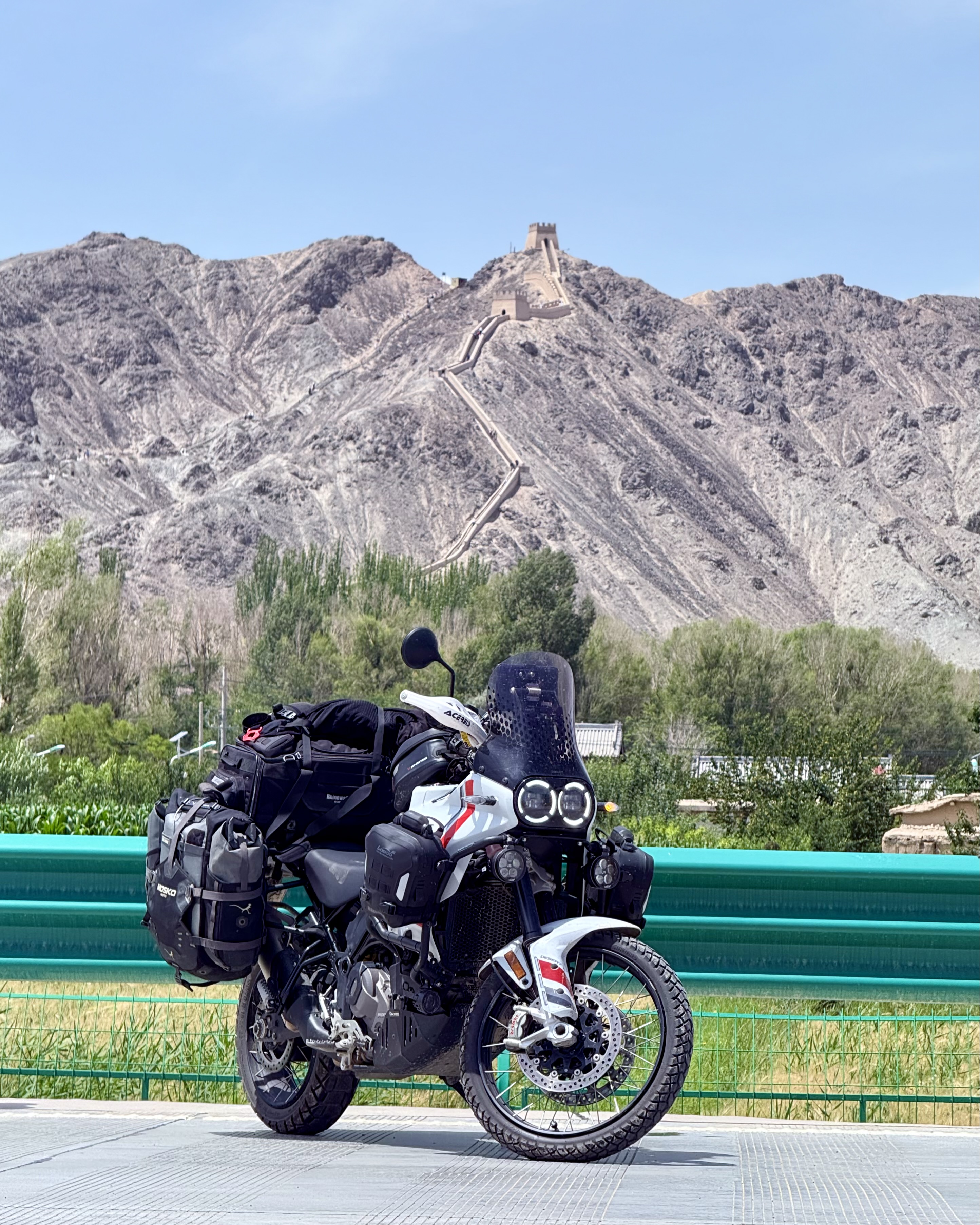 View 1: from the expressway toll booth
View 1: from the expressway toll booth
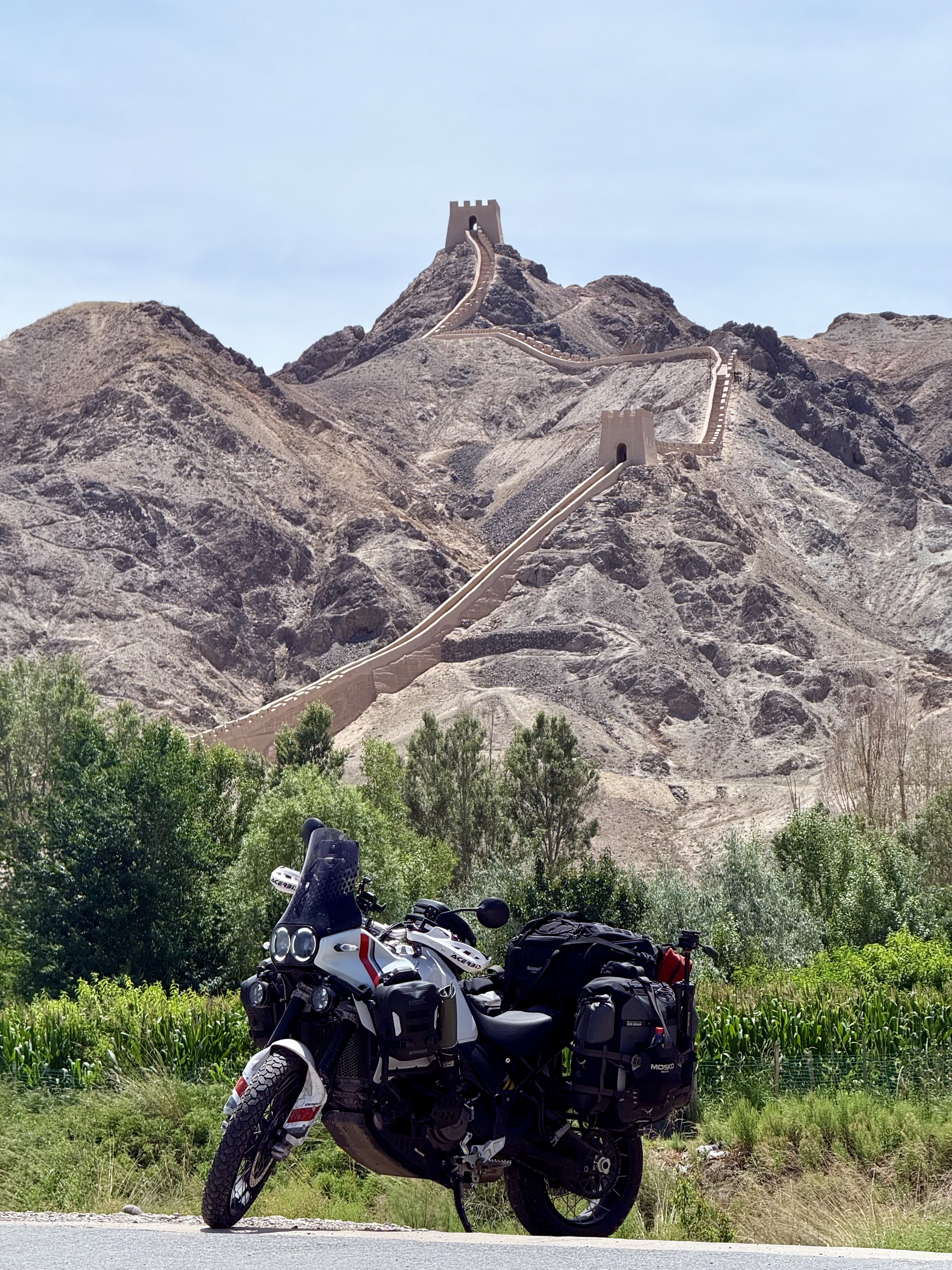 View 2: from the road outside the tourist attraction
View 2: from the road outside the tourist attraction
Once I had taken the photos I wanted, it was already nearing 2PM, and with ~370kms between Jiayuguan and Dunhuang, it was time to set off.
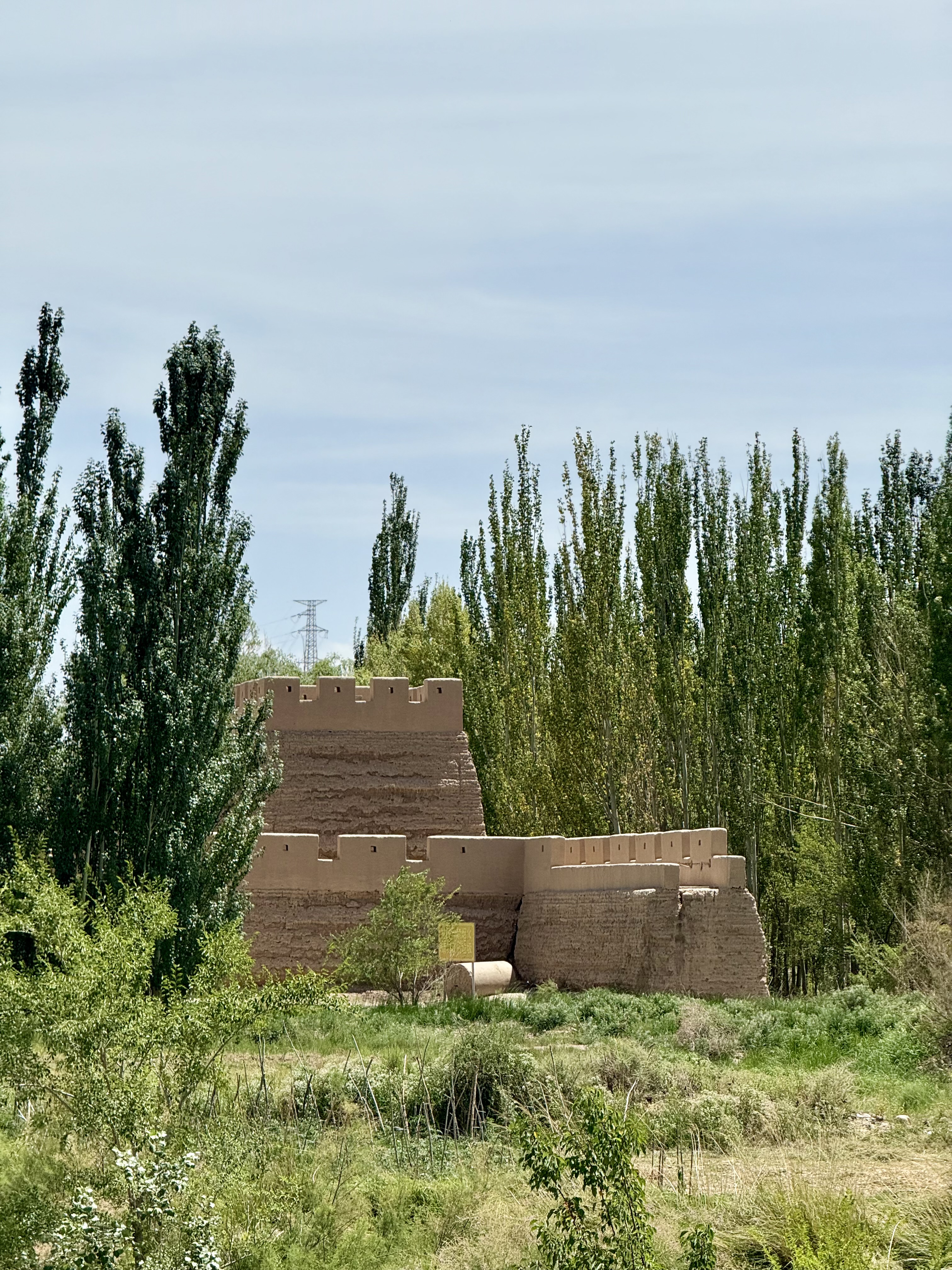 Small fortifications of the Great Wall on a farm
Small fortifications of the Great Wall on a farm
Leaving Jiayuguan feels like a turning point in my journey. The landscape has changed dramatically, and it feels like a departure from “the China I know”. Though to be fair, I don’t think I “knew” any of the places I’d visited so far, they just felt more familiar to me, although this sense of familiarity has been slipping away since departing from Chengdu.
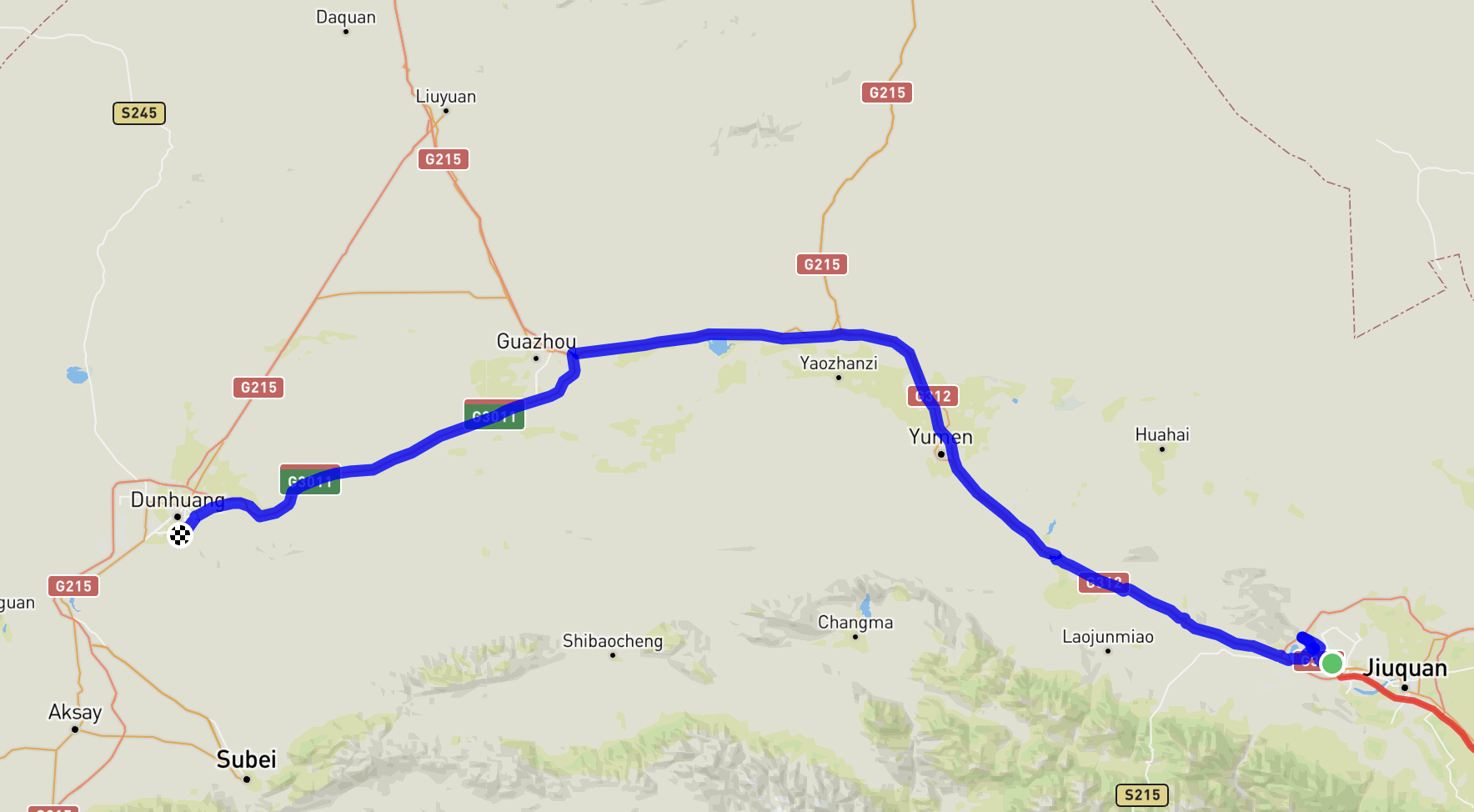 Today’s route in blue
Today’s route in blue
The ride to Dunhuang was a straight shot through the Hexi corridor. Snowcapped mountains on the left, and desert to the right as I rode due West. The temperature ranged from 33-35 degrees. The landscape varied from basic shrubbery and sandy ground (one step less than “desert” in my books), to sections of rock which seemed to rest in swirls and mounds. What was more impressive was the built environment. As I rode, I passed countless wind installations, and a solar park.
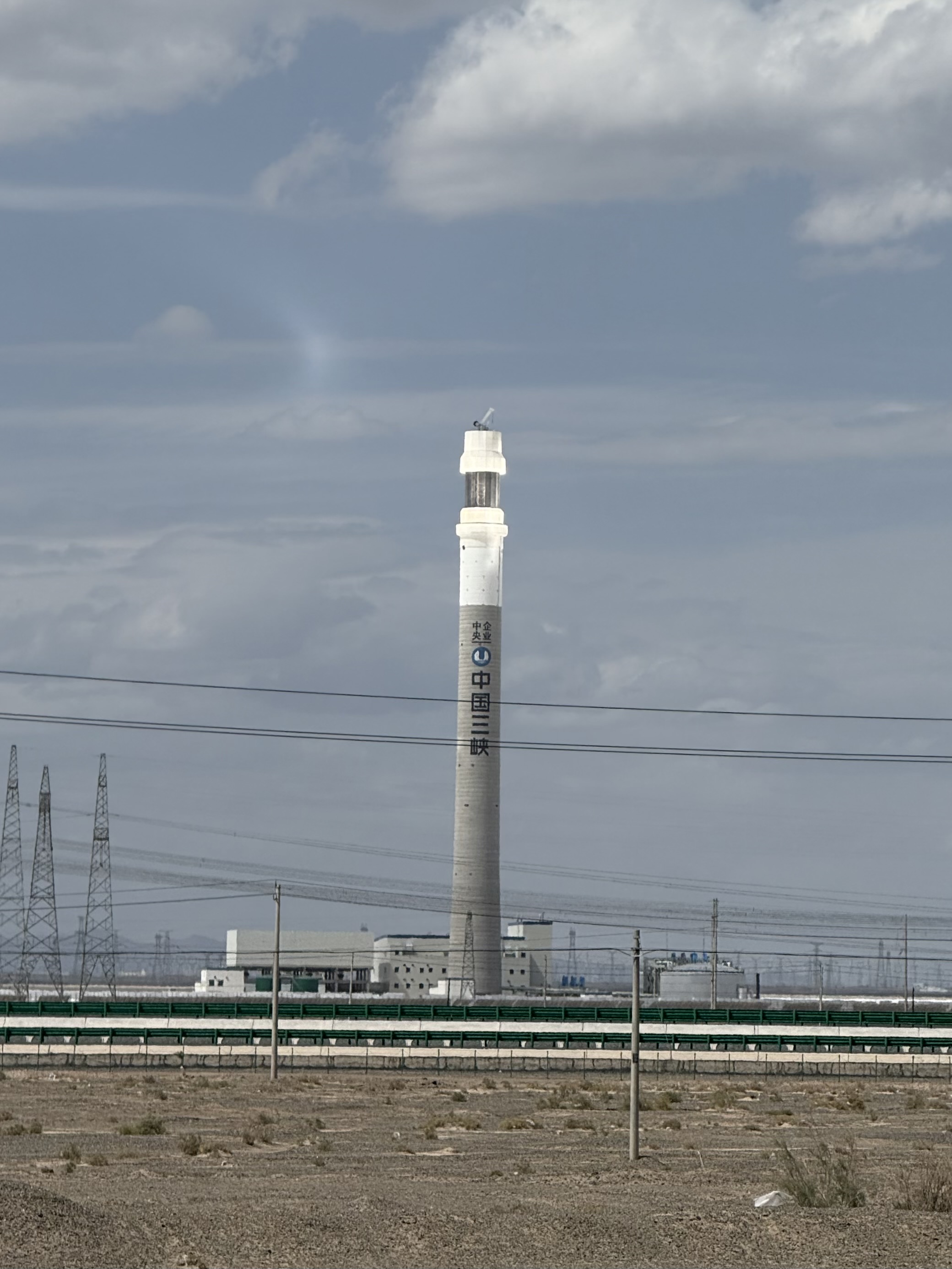 The illuminated tower of the solar park
The illuminated tower of the solar park
For tens of kilometres at a time, the horizon was filled with wind turbines, some stationary, others spinning quickly. The scale of these machines became apparent as I rode past trucks which were each carrying a single wind turbine blade. On the road, to mark a safe distance to leave between yourself and the car in front, there are metre markings, going from zero to 100 metres. When compared to these markings, the blades would have stretched at least 120-180 metres. Some of the wind turbines were spinning at 30 RPM, and while I rode I tried to calculate the velocity at the wing-tips. I must have some incorrect assumptions, because based on a 150M radius (turbine length), and 30RPM, the tips should be travelling at 1800KPH which is absurd.
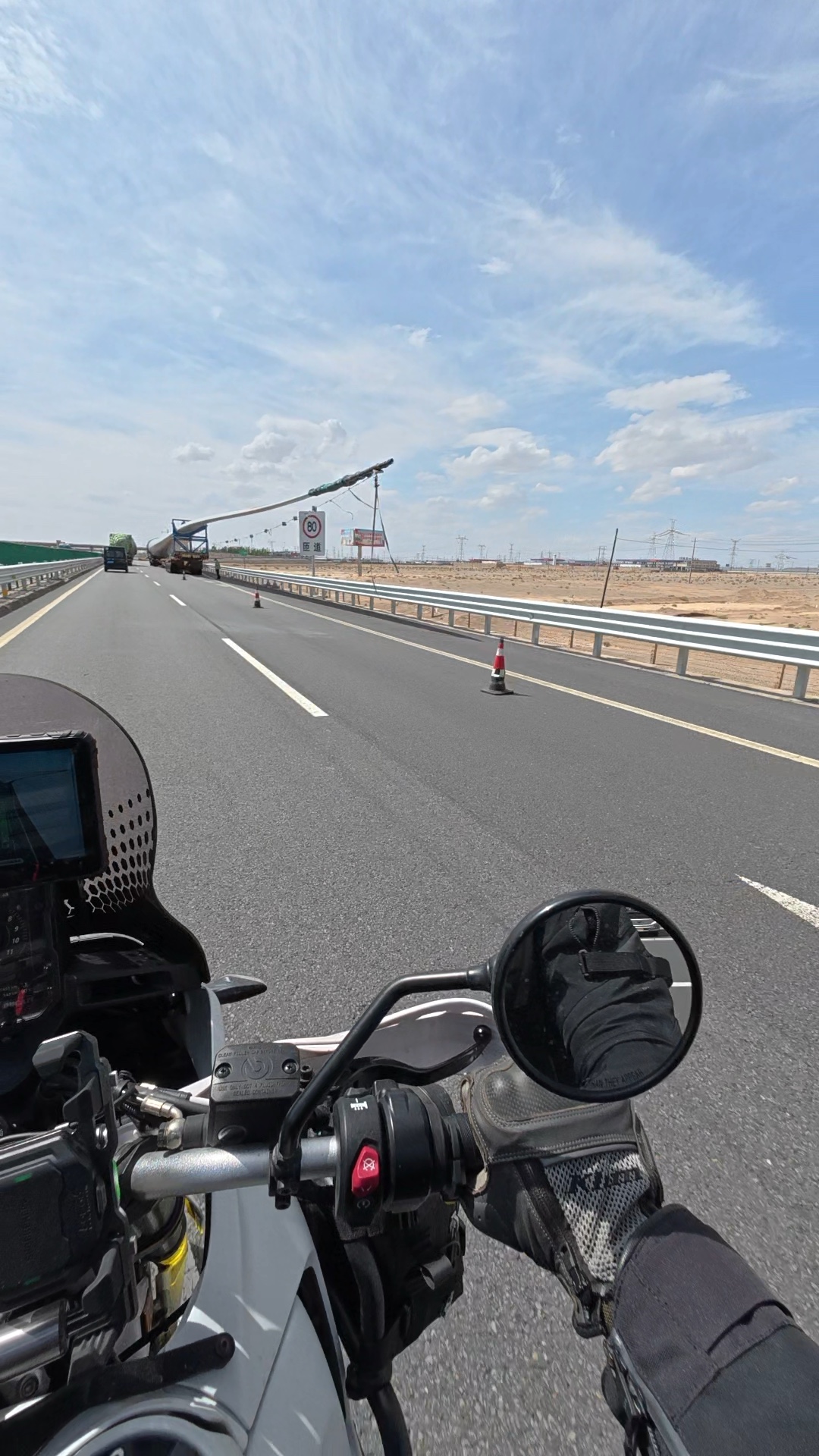
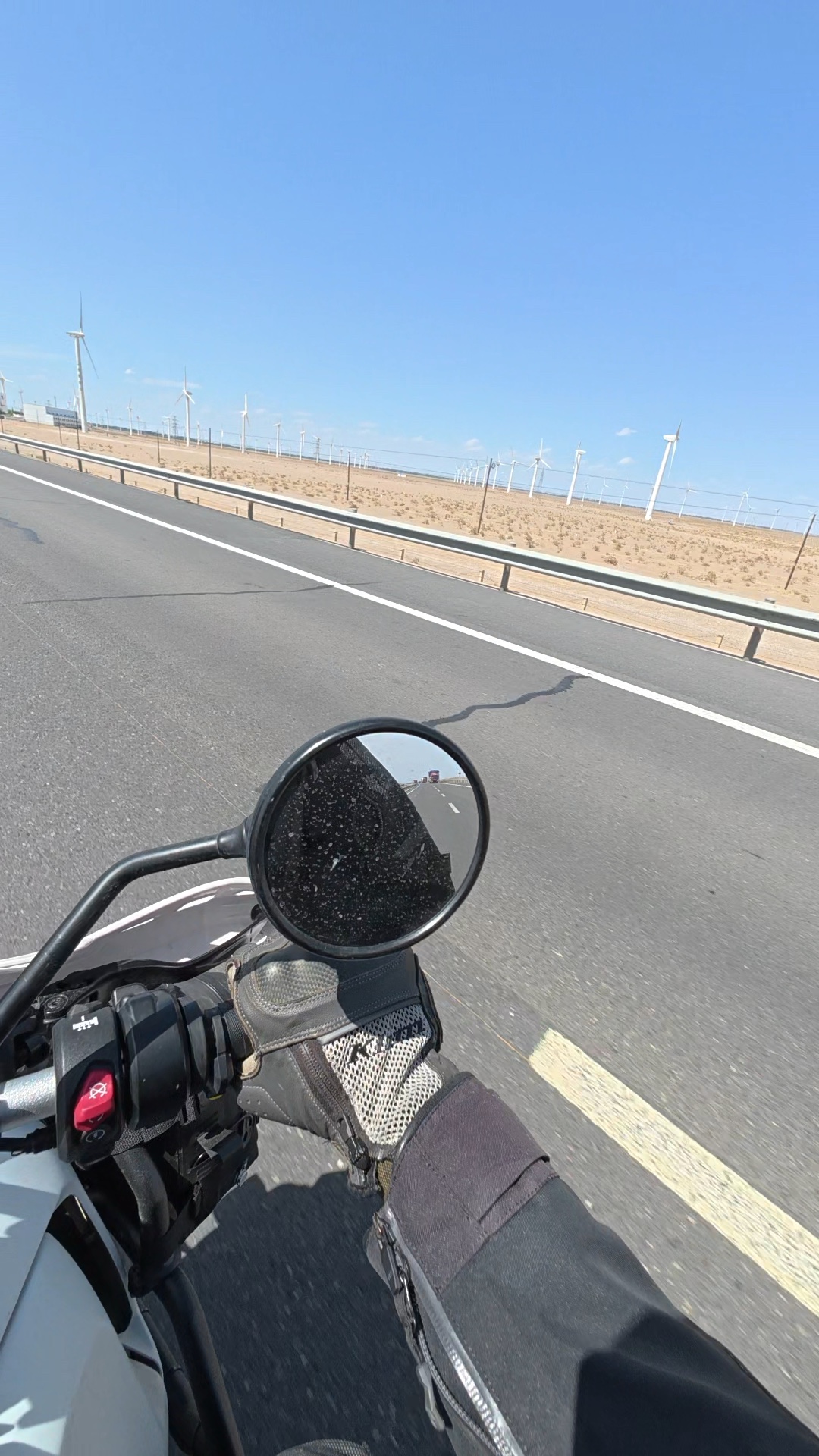
Most of the ride was spent contemplating the scale of China. Both the scale of Imperial China, and of the industrial might of today’s China. Almost 1000 years ago, during the Ming Dynasty, Imperial China stretched from Yunnan, to Jiayuguan, from south to north. Forgetting the scale from west to east, it has taken me 20 days and ~4600KMs to travel along its longitudinal axis. This is on a motorcycle, with expressways and tunnels exceeding 10 KM in length! To put this size into context, it takes me about 4 hours to go from one side of the UAE to the other, and 3 days riding from one side of Malaysia to the other. The scope and challenge of administering and exerting power over such a domain in medieval times is bewildering. I can understand why emperors were seen to have been given a divine mandate to rule “all under heaven”. The landscapes I have passed through in the last 20 days (especially the Tibetan Plateau) truly feel like I have been riding around heaven’s doorstep.
The other element of scale I have been hit by is the industrial might and development of modern day China. Everyone knows that China has impressive infrastructure. But it takes 20 days of riding along the highways to truly appreciate what they have achieved. The most rural and remote areas are no longer distant due to expressways which carve through countless mountains, hills, valleys, rivers, and defy gravity to bring access to all parts of the interior. Tunnel after tunnel, each over 1KM in length, some ranging up to 10KM in length, just to access remote parts of Sichuan and to connect Tibet to the mainland. High speed rail which seems to most of the major transport corridors I travel along, whizzing along. There is no society more cyberpunk than that of China. Truck after truck after truck, running throughout the day and throughout the night to transport goods and building materials even along remote corners. Even as I rode today, I passed by 15 wind turbine blades, and probably about 10 wind turbine hinges (the bit which connects the blades to the tower) on trucks.
China’s roads and transport infrastructure is the bedrock upon which society has been built. I get the feeling that the leadership have very strong views of what a developed society “should” look like, and have strong opinions on how to get there. Crudely, it seems like the “playbook” was:
- Try to make things other people want at scale
- With dollars acquired from this, acquire know-how in all the ways possible (students learn overseas, M&A of IP leaders and then roll-out in China, some more unsavoury methods that China is often accused of), and the resources to develop infrastructure, and mass manufacturing
- At the same time, develop home-grown technical know-how (i.e. mass enrolment into STEM)
- At the same time, maximise energy generation, and usage Now, it seems like it was “all part of a grand plan”, with each part fitting in synergistically with the other. Only with road infrastructure is it possible to deploy renewables at scale throughout the interior (not to mention connecting people, uplifting out of poverty, access to education etc etc). Only with renewables at scale is it possible to support (in a decentralized manner) the increasing electrification of society. Only with the electrification of society can automation and improved living standards be delivered to the masses.
It feels like the path forward from today sees China with:
- Domestic transport which is mostly electrified (planes substituted with high-speed rail, cars substituted with EVs)
- Manufacturing which is increasingly light on labour, and heavy on automation
- A significant diversity of goods and resources transport infrastructure (courtesy of Belt and Road), allowing resources to come in from a multitude of ports and land corridors, and finished goods to leave
- A mostly decentralised grid, where there are few single points of failure, with such prevalence of renewables. While riding through China, I feel the hubris of humankind. China’s roads, tunnels, and bridges stand in defiance of nature. The renewables harness nature’s power at unfathomable scale. I haven’t seen the dams and other significant civil works, but I imagine they would evoke similar feelings.
Following this train of thought, I wondered “why is China like this, and other countries I have been, not”? It feels like the productive capacity of China has been geared towards consuming resources, acquiring technology, and tangible goods, whereas other parts I have travelled are more services oriented. Put another way, a dollar earned in China is spent buying Iron Ore, Copper, intermediate technology, and then used to build roads and manufacturing plants. A dollar earned elsewhere is more likely spent on professional services, healthcare, which ends up in the pockets of (high) wage earners, which are used to consume goods, entertainment (and with only a small portion of government spend going towards the “tangible stuff”). This probably is due in part due to the principles inherent in society. Western societies are driven by a belief that “the people know best” (i.e. democracy and capitalism, where the people’s allocation of capital and allocation of power is viewed as the optimal outcome over large timescales). Chinese society seems to be more patriarchal in nature. “The leader of the {household / company / state} knows the best”. Time and history will deliver the verdict on which model proves superior, however I will say that what CAN be achieved by the latter is extremely impressive.
When I reached Dunhuang, I did not have any expectations or preconceived notions of what it would look like. It is a magnificent town, with a backdrop of the gigantic dunes of the Gobi Desert, against new roads, tall trees, and lots of greenery.
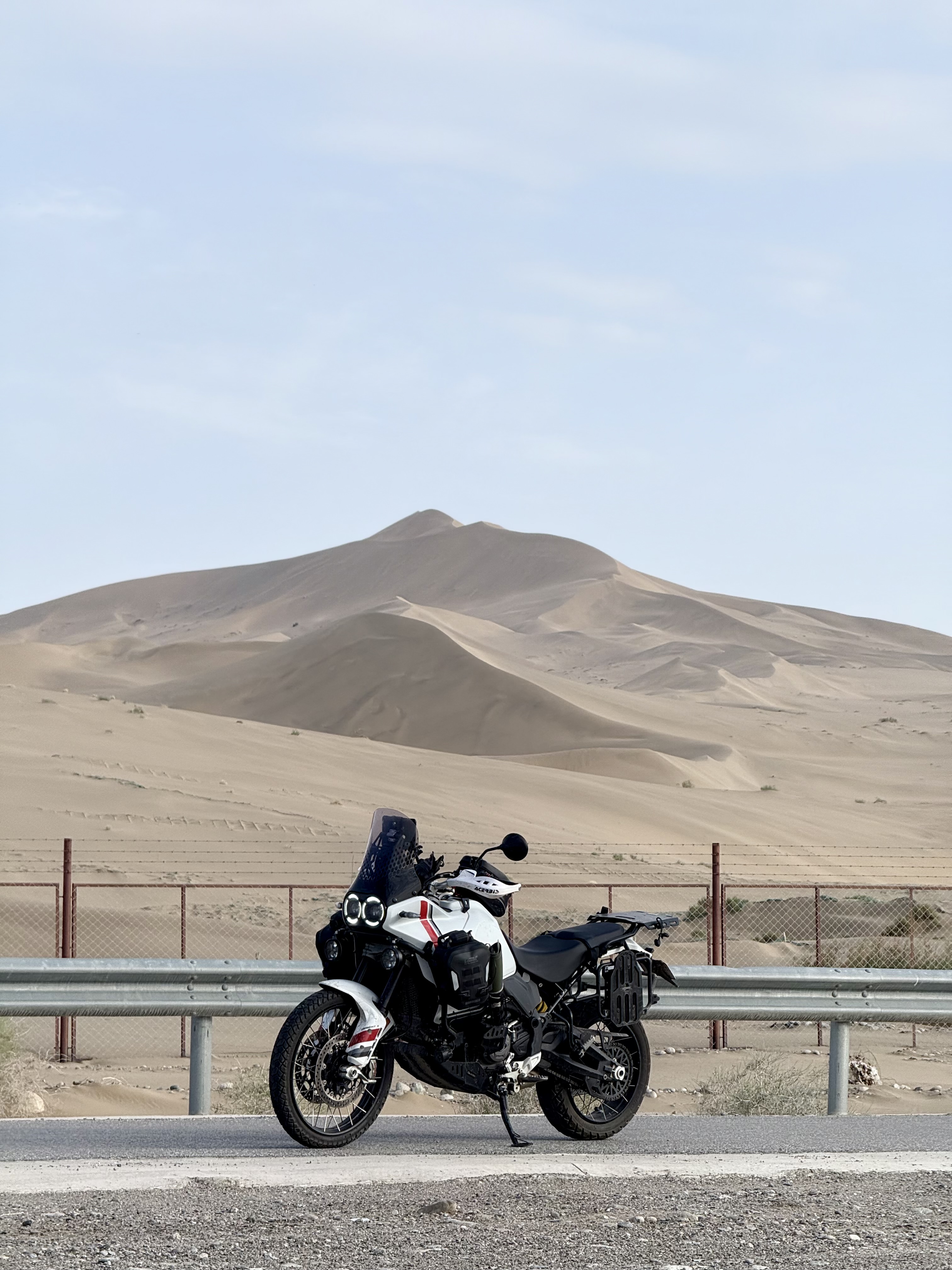 Sandeep and the Gobi Desert
Sandeep and the Gobi Desert
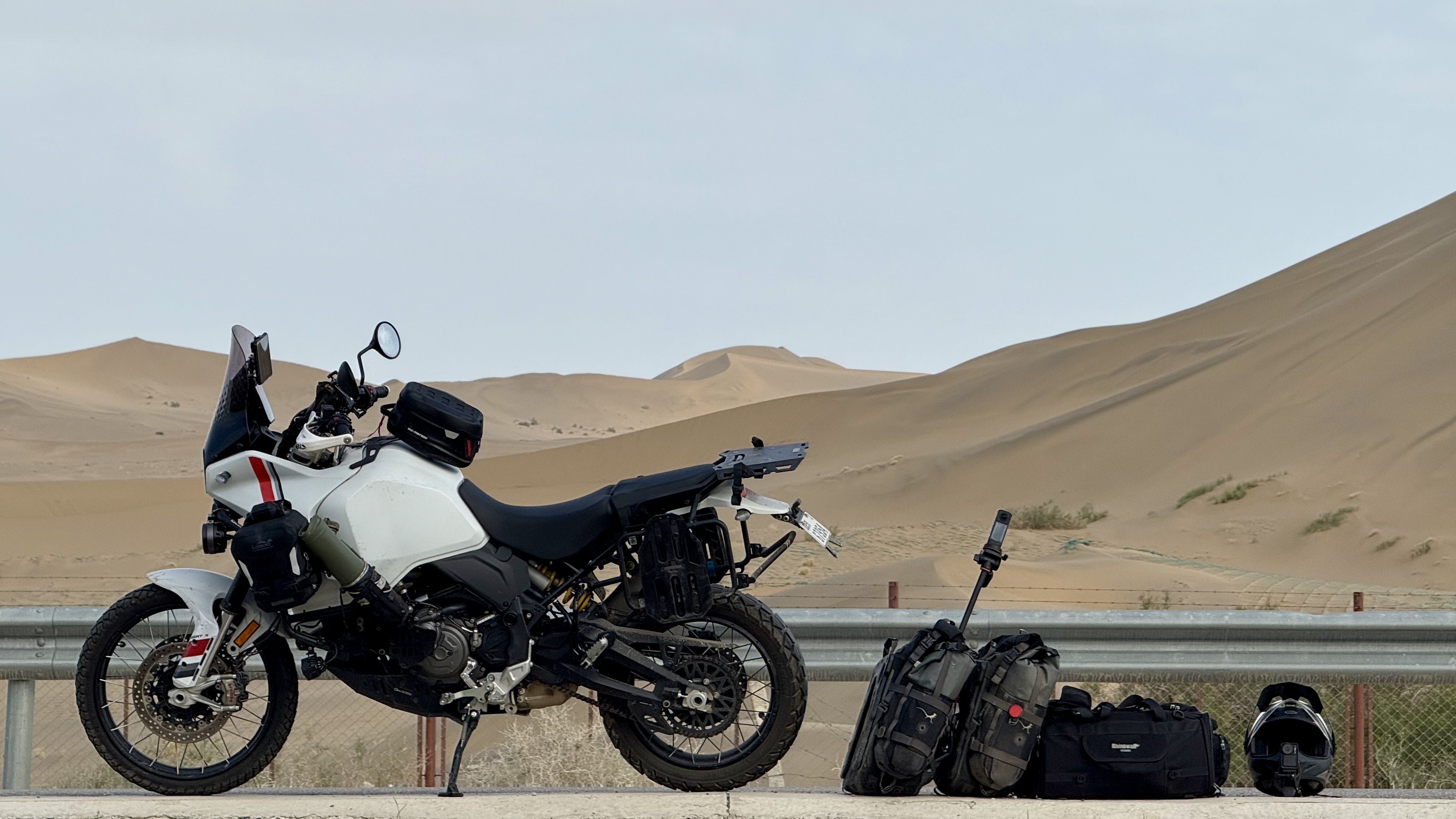 Photo prep!
Photo prep!
It is also overrun by tourists (I happen to be visiting during peak season). I have not seen so many people in one place. At times this afternoon, I was having trouble getting internet reception because the infrastructure was overwhelmed by the number of cellular devices in one place.
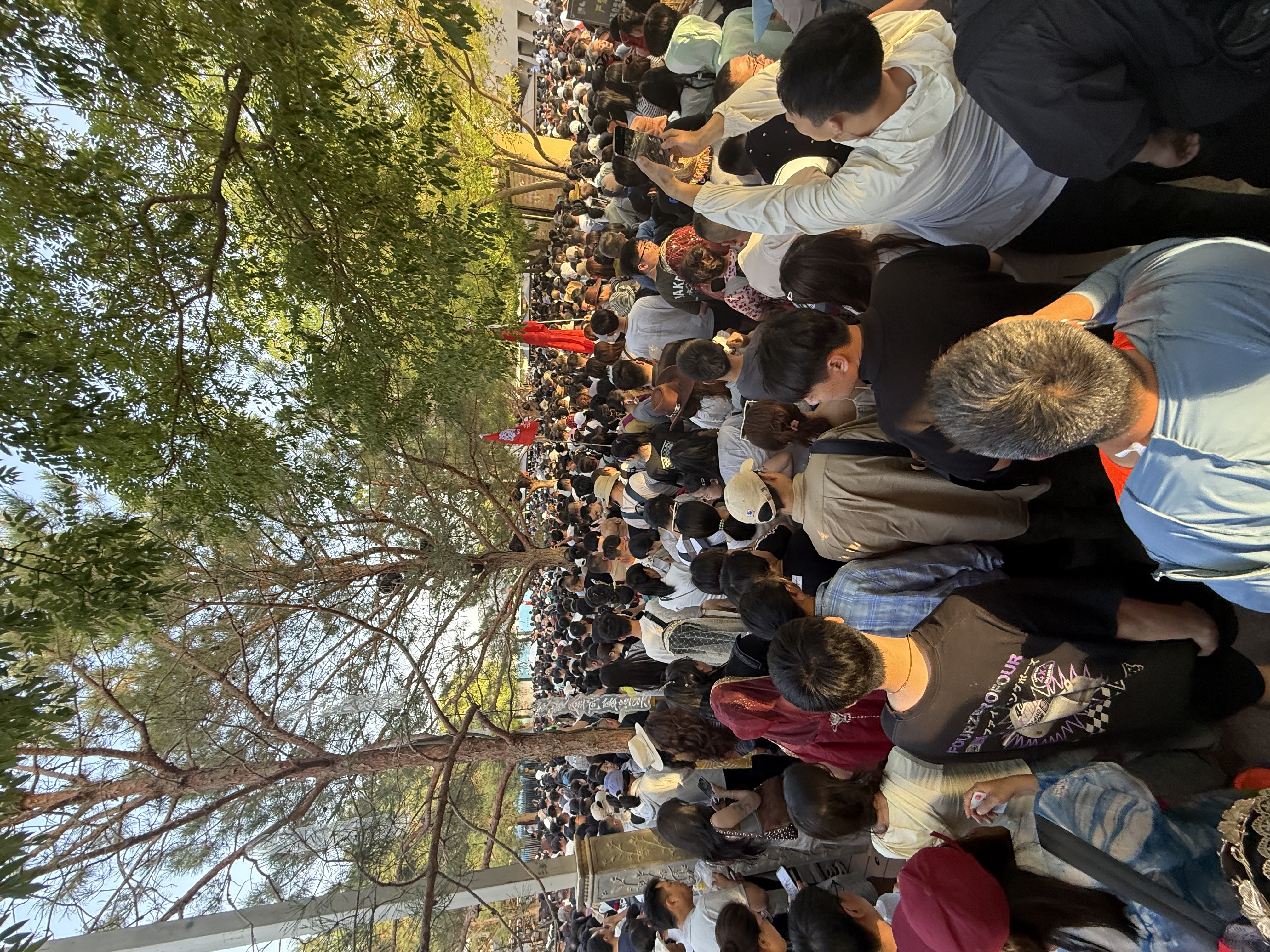 Trying to get into the desert park with tens of thousands of other tourists
Trying to get into the desert park with tens of thousands of other tourists
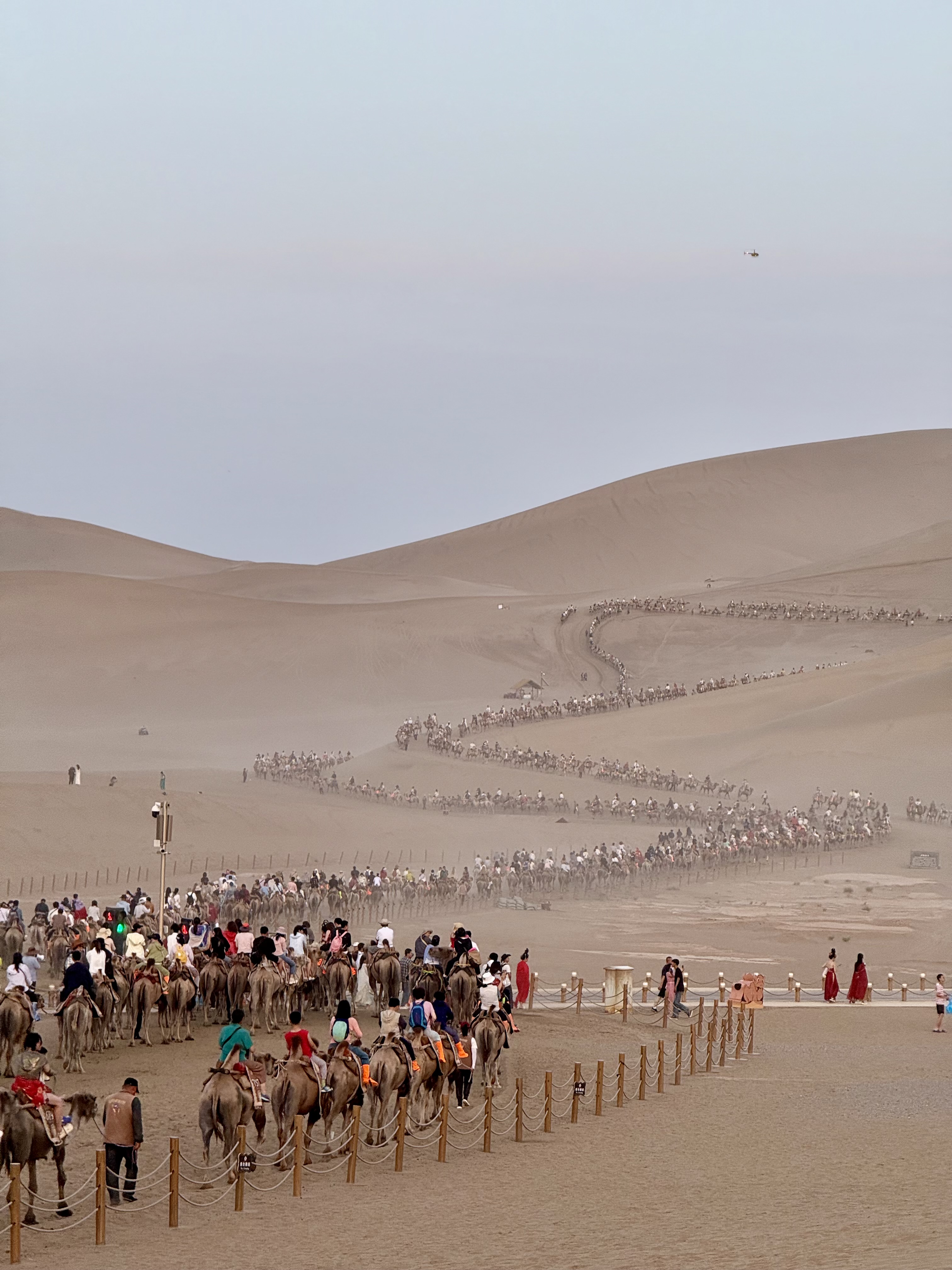 A bona-fide caravan of tourists riding camels
A bona-fide caravan of tourists riding camels
I spent the evening at one of the tourist sites, climbing one of the large dunes, while a talent show was held for the tourists.
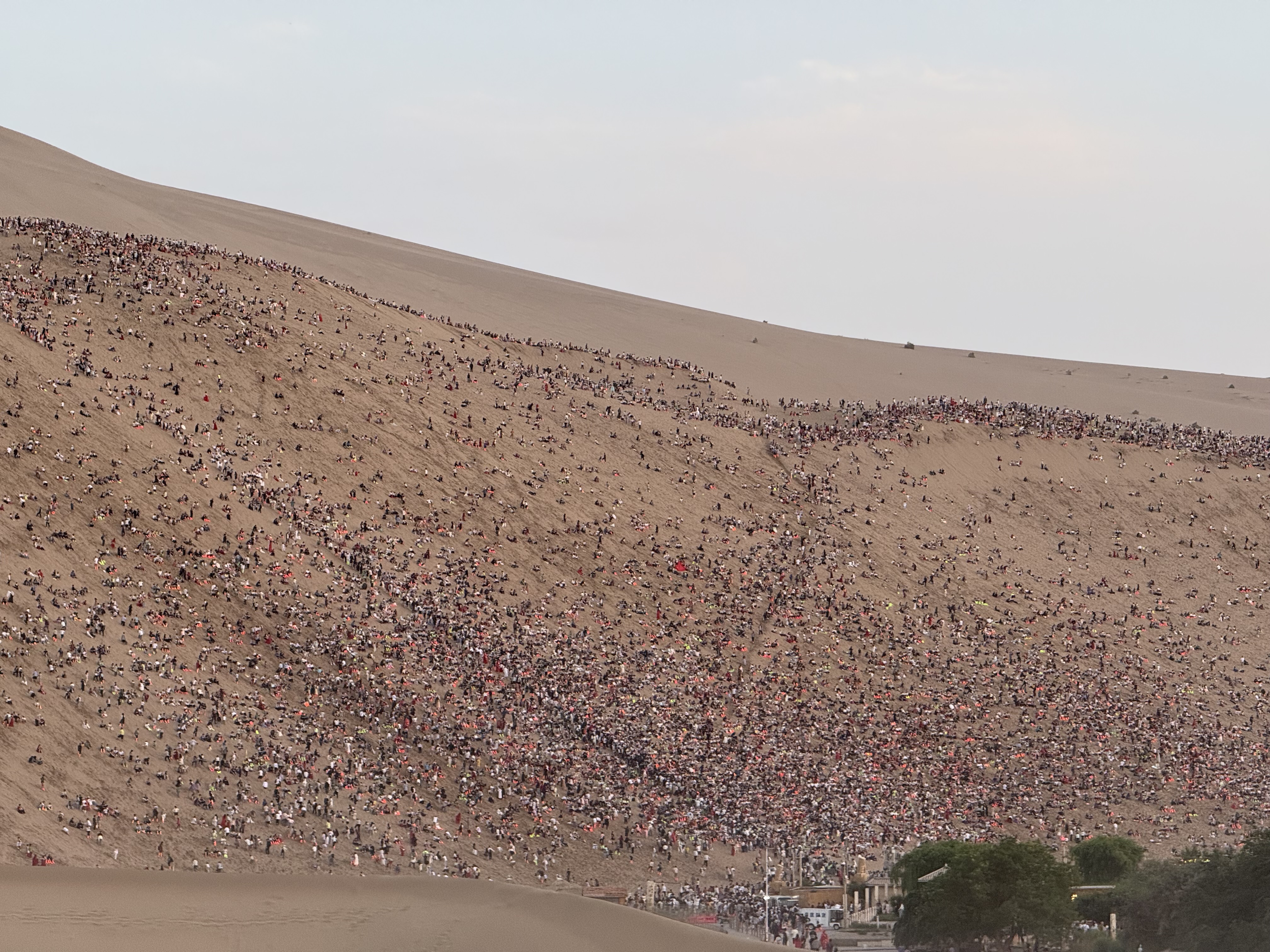 Tourists (including myself later on), climbing the gigantic dune. I did not realise at the time, but on the other side of this dune is the crescent lake
Tourists (including myself later on), climbing the gigantic dune. I did not realise at the time, but on the other side of this dune is the crescent lake
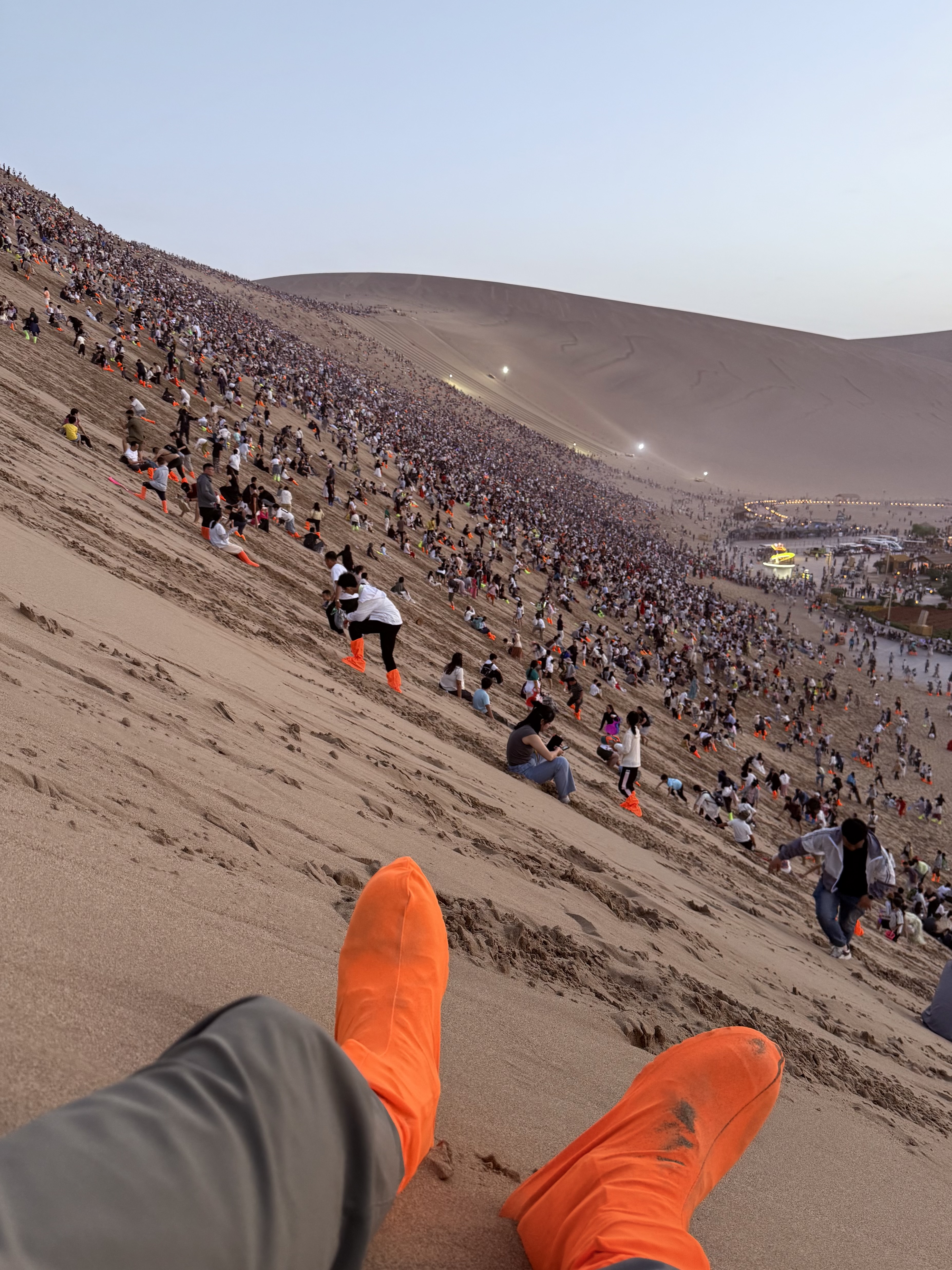 Getting comfy for the talent show. The orange fabric is a “shoe cover” which helps stop sand getting in.
Getting comfy for the talent show. The orange fabric is a “shoe cover” which helps stop sand getting in.
I’ll be staying in Dunhuang for the next few days, until my tour guide arrives and then I will continue west into Xinjiang.
Some stats:
- 423 KMs travelled
- 12.6L fuel added
- 5 unique interactions
- 30g coffee consumed
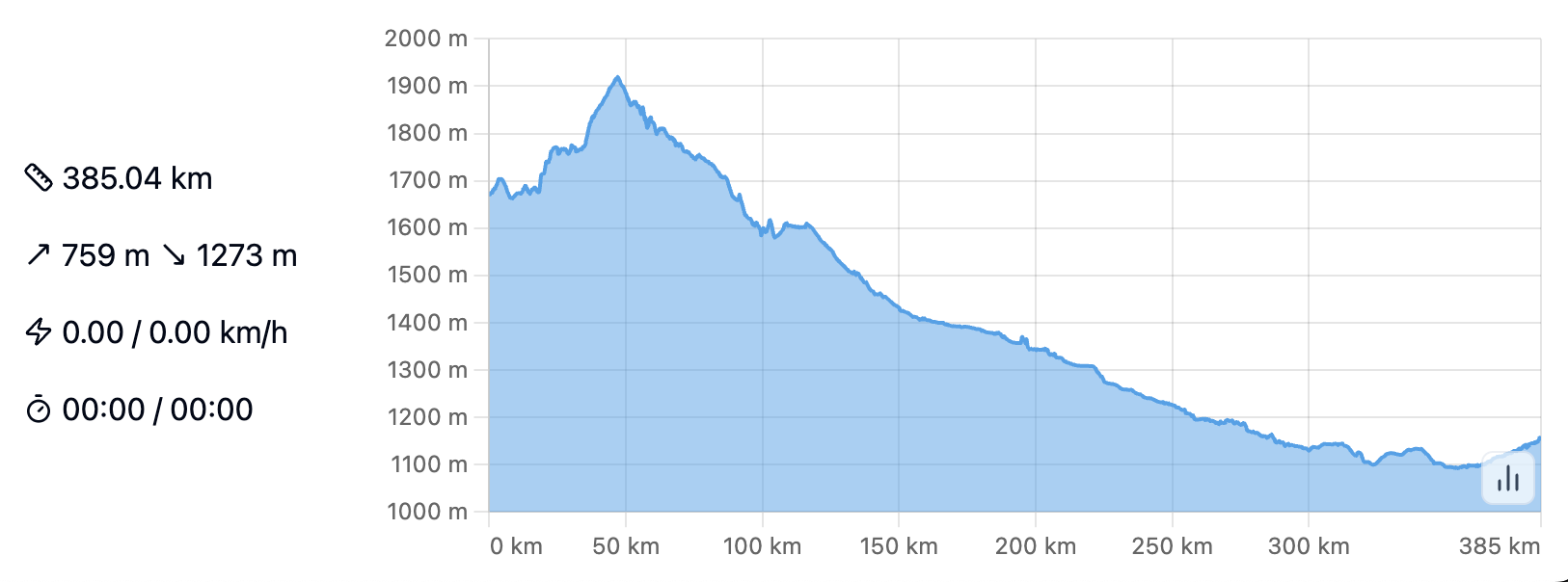 Altitude map of today’s ride
Altitude map of today’s ride
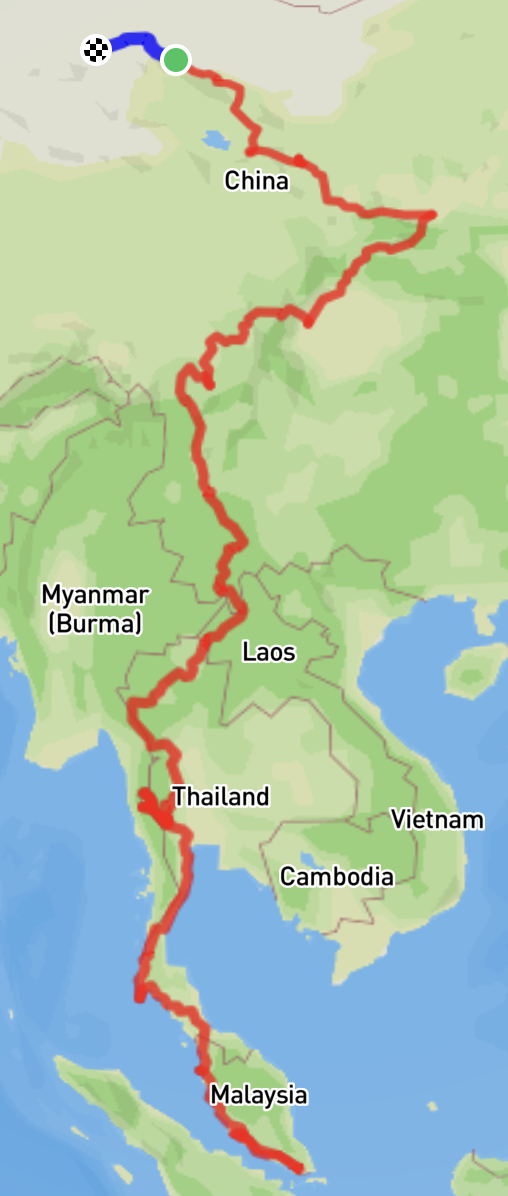 Route to date
Route to date